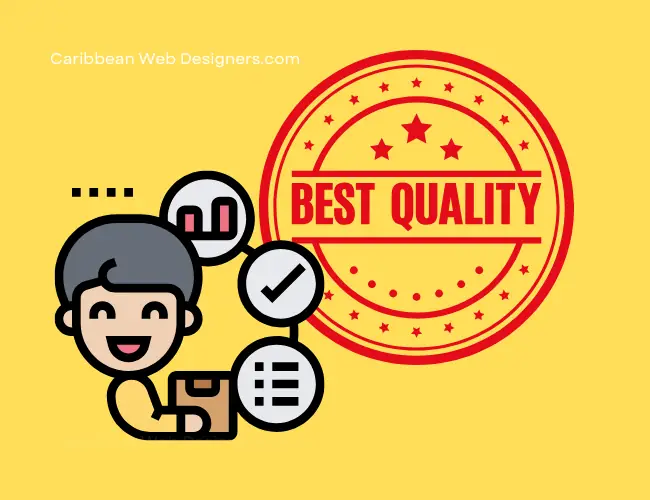- You have no items in your shopping cart
- Continue Shopping
5 Strong Reasons Why Designers Are Worth Premium Pay

Designers are worth premium pay is an understatement. Last week, I came across a LinkedIn post that hit close to home. Haroon Ahmed, a fellow designer, voiced what many of us have experienced but struggled to articulate: the persistent undervaluation of design professionals in today’s market. His words resonated deeply – not just with me, but with thousands of designers who engaged with his post.
Here’s the reality: we’re asking designers to be magicians while paying them like apprentices.
I’ve spent over a decade in the design industry, wearing multiple hats – from web design to graphic design, from video editing to web development. At the beginning of my career, any designer (web designer, or graphic designer) could earn an honest living. However, it seems that things are changing rapidly.
Can we still say that designers are worth premium pay today? And I’ve watched a troubling pattern emerge. Companies expect senior-level expertise for entry-level compensation, demand mastery of an ever-expanding toolkit, and still somehow view design as merely “making things look pretty.”
Let’s shatter some illusions, shall we?
Table of Contents
ToggleTable of Contents
The Modern Designer: Part Artist, Part Strategist, Part Mind Reader
When you hire a designer today, you’re not just getting someone who knows their way around Adobe Creative Suite. However, looking at many printed media, social posts, and even signages, you are wondering who did this bad design. And here are my 5 reasons why you should pay your (web/graphic) designer a premium salary – you’re getting a professional who:
- Conducts market research to understand your target audience
- Analyses competitor strategies to give you an edge
- Translates complex data into visually digestible information
- Builds brand recognition through consistent visual storytelling
- Solves user experience problems before they impact your bottom line
And they do all this while juggling multiple projects, meeting tight deadlines, and staying current with rapidly evolving industry standards. And much more.

Designers Are Worth Their Pay – Understanding The Hidden Costs of Undervaluing Design
Here’s what happens when businesses try to cut corners on design talent:
A client once told me they couldn’t justify “premium” rates for design work. Six months later, they spent triple the original quoted amount fixing inconsistent branding, poor user experience, and lost market share. The kicker? Their competitors had invested in quality design from the start and captured the market they were targeting.
This isn’t an isolated incident. I’ve witnessed countless businesses learn this lesson the hard way. The real cost of undervaluing design isn’t just financial – it’s the missed opportunities, the damaged brand reputation, and the endless cycle of revisions that could have been avoided with proper investment in design talent.
Breaking the “Just Make It Pretty” Mindset
Design isn’t decoration – it’s problem-solving. When a designer creates a website, they’re not just arranging elements on a page. They’re:
- Building trust with your audience through strategic visual hierarchy
- Guiding users toward important actions through careful psychological principles
- Ensuring your message reaches its target audience effectively
- Creating systems that scale with your business growth
Every color choice, every font pairing, every layout decision is backed by strategy and expertise. This isn’t guesswork – it’s years of experience and continuous learning put into practice.

The Path Forward: Fair Compensation for Real Value
To businesses serious about growth, here’s what you need to understand:
- Good design is an investment, not an expense. When you properly compensate designers, you’re investing in your business’s future success.
- The “race to the bottom” in design pricing hurts everyone. Cheap design often leads to expensive fixes and lost opportunities.
- A well-compensated designer is a loyal, motivated partner in your business’s success. They’ll go the extra mile because they feel valued and respected.
Yes, Designers Are Worth Their Premium Pay – A Call for Change
To business owners: The next time you’re tempted to view design as a commodity, remember that you’re not just paying for time – you’re paying for expertise, strategy, and results.
To fellow designers: Stand firm in your value. Continue educating clients about the strategic importance of design. Build portfolios that showcase not just visual appeal, but business impact.
The conversation about fair compensation in design isn’t just about money – it’s about recognizing and valuing the strategic role design plays in business success. As Haroon Ahmed pointed out, it’s time to end the cycle of overwork and underpayment in design.
Because when we properly value design, everyone wins – businesses, designers, and ultimately, the customers we all serve.
What’s your experience with design value in business? Have you seen the impact of investing in quality design? Share your thoughts in the comments below.
FAQ: Frequently Asked Questions About Design Compensation
A senior designer brings more than just technical skills to the table. You should expect strategic thinking, leadership abilities, deep industry knowledge, and the capacity to align design solutions with business goals. They should be able to mentor junior team members, communicate effectively with stakeholders, and drive innovation in your design processes. Most importantly, they should demonstrate a proven track record of solving complex business problems through design.
While design impact isn’t always directly quantifiable, there are several key metrics you can track:
- Increased conversion rates on websites or marketing materials
- Reduced customer support tickets due to better UX
- Higher customer engagement and retention rates
- Improved brand recognition and recall
- Decreased bounce rates on digital platforms
- Time saved in implementation and revision cycles
Compensation varies by location, experience, and specialization, but here’s a general framework:
- Junior designers: Should be able to cover living expenses plus professional development
- Mid-level designers: Should reflect their ability to work independently and deliver consistent results
- Senior designers: Should acknowledge their strategic input and ability to drive business outcomes
Remember: The cost of hiring and training a replacement often exceeds the investment in fair compensation for existing talent.
Focus on outcomes rather than outputs. Instead of just showing pretty portfolios, document:
- Problems solved through design
- Business metrics improved
- Time or money saved
- Customer satisfaction increases
- Brand growth and recognition gains
In our rapidly evolving industry, continuous learning isn’t optional – it’s essential. Designers investing in new skills and staying current with industry trends should be compensated accordingly. This includes time and resources for:
- Learning new tools and technologies
- Attending industry conferences
- Participating in professional workshops
- Exploring emerging design trends
- Developing specialized expertise
Remember: The design industry evolves rapidly, and investing in your designers’ growth is investing in your business’s future.


